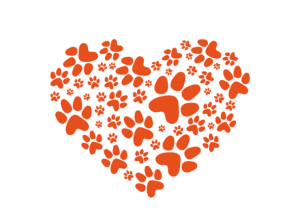The Impact Animals Have on the Dying
by Janie Rakow

When my father was dying, my parents’ 10-year- old yorkie/shitzu rescue dog, Betsy, often lay on his bed licking and nudging his feet. Other times, she stood guard, pacing up and down the bed as my dad slipped out of
consciousness. Betsy would alternate between lying next to my mom, and comforting her, and sleeping on my dad’s bed, comforting him. It seemed as if she knew the end was near for my dad. Three months later, as my mom was dying, again, Betsy stood guard. Her unwavering devotion to both my parents as they were dying was heartwarming.
Research suggests that our pets do have an innate knowing. An article in Psychology Today explains that dogs not only show empathy, but they are also capable of sympathy. They can sense when we are sad or ill; they can even sense when we are dying. Whether it is from our body language or an odor that we emit, our pets seem to know. Using their sense of smell, dogs have been taught to detect prostate cancer by sniffing urine and lung cancer by sniffing breath. They have also been able to detect melanoma by just sniffing the lesion. Cats also appear to be able to detect cancer. However, we don’t hear as much about felines as we do canines because researchers have not found reliable ways to train cats. There is a remarkable story of Oscar, though, a cat in a nursing facility in Rhode Island that curled up on patients’ beds hours before they died. Yet, Oscar barely knew these patients. He had very little interaction with them, except at the end of their lives. Despite this short relationship, Oscar had proven medical staff wrong with his uncanny ability to accurately predict death. His presence alerted staff members (who clearly don’t have doulas!) to notify families of impending death.
Whether it be cats or dogs, our pets are more in-tune with end of life than we think. Animals’ sense of smell is extremely heightened. Being deeply attached to their owner, they detect slight changes in odors emitted from the owner’s body. Cats and dogs have both been known to paw at the area where they detect a change, and it is often the site of the cancer.
Our animals also give us great comfort as we are dying. Many of the dying who I have worked with have talked about seeing their beloved pets who have died. Susan, a patient in a facility who was near death, spoke of Max, her deceased dog. One day, Susan cried out “There’s Max!”, as she pointed outside. Of course I looked out the window, seeing nothing. She was so excited to see Max, and talked about how he was playing near her window. It gave her immense comfort and delight to see her dog again.
As another patient, Sam, was nearing death, his wife whispered in his ear that he would meet his four dogs on the other side. He grew up with the dogs as a young boy, and often talked about how much he missed them. As his wife described how they would greet him, lick him, and be reunited with him soon, tears streamed down his face. His breathing, which had been erratic, settled into a calm, rhythmic pace. Thinking about seeing his childhood pets gave him great comfort.
While we don’t know if people actually see their pets when they are approaching death, we do know that thinking about them brings joy and comfort. People describe it as unconditional love. Whether they are steadfastly giving their affection at the bedside, or romping outside, patiently waiting for their owner to die, pets give their unwavering love throughout the dying process.
